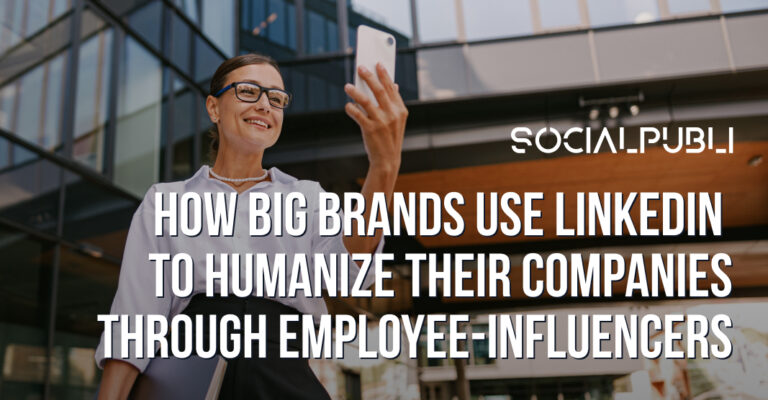In today’s blog we are going to talk about pain points and how you can solve them, and how it affects influencers.
What is the meaning of pain point? Is a persistent or recurring problem (as with a product or service) that frequently inconveniences or annoys customers, in our case influencers. Also we will see pain points that also affect brands working with influencers.
Welcome to the big, booming world of content creation, a universe that shines with potential, pulsates with creativity, and promises a ride like no other. But like all great adventures, there are challenges, problems and enigmas.
We are going to see some pain points that influencers have to face while working with brands and doing campaigns including:
- Pressure to Perform: Influencers may feel the constant pressure to produce engaging content and maintain a strong online presence, which can be mentally and emotionally exhausted. Having the urge to adapt to trends while creating high quality content can be challenging to influencers.
- Hate comments and abuse: Many influencers experience online harassment, hate comments, and cyberbullying, which can take a toll on their mental well-being. Also brands often do not give enough space for the influencer to express him/herself or create content adapted to his/her tone and format and it gets easier to get hateful comments while you force your community to watch certain content not aligned.
- Monetization Challenges: While some influencers are successful in monetizing their platforms, others struggle with inconsistent income, brand partnerships, and navigating the complexities of sponsored content and more details as copyright content. Most of the influencers often have 70% of their content not monetized.
- Authenticity and Identity: Balancing personal authenticity with the demands of sponsorships and brand collaborations can be challenging for influencers, leading to identity conflicts and loss of genuine connection with their audience. That’s why it is so important to balance your own not sponsored content with campings to avoid saturating your audience.
- Work-Life Balance: Maintaining a healthy work-life balance can be difficult for influencers, as the lines between personal and professional life blur in the digital space. Some effects of spending a lot of time on social media are correlated with the occurrence of depression, anxiety, stress, Internet addiction, fear of missing out, learning disabilities, and sleep disorders.
Also read: Influencers are becoming brands herores
These pain points highlight the complexities and challenges that online influencers often face in their careers.
On the other hand, Influencer marketing, as part of digital marketing, has evolved impressively in recent years. For that reason companies are starting to develop strategies and notice the positive effect it has on their organization. But as well as in every field there are certain things you should avoid doing. Here you find the most common influencer marketing challenges for companies.
1. Choosing the matching influencer for your marketing
Finding the right influencer is a complicated decision and must take time to choose the right profile. Choosing the wrong ambassador for your brand might result in total failure. For instance, loss of money, time, and most importantly, harming the reputation of your brand.
Also an influencer must fit in with your brand and correspond to the values you share. Finding the right one in your niche among millions of influencers is a common problem. Their audience must match your target group. Even though an influencer has a wide range, it is completely pointless, if your ideal customer does not belong to it.
Moreover, influencer metrics are also worth considering. A marketer cannot judge an influencer’s performance just by the followers’ count, for example, keep an eye on likes, comments and how the influencer engages with their community!
And be careful with accounts that have a lot of followers but they seem fake. Nowadays getting fake followers is fast, easy and cheap. That’s why companies must track all these metrics that combined together speak for influencers’ performance.
2. The challenge of pricing an influencer right
Secondly, marketers place pricing an influencer as one of the hardest influencer marketing challenges. There are several factors that affect while choosing which price you should pay to the influencer. For that reason, it is one of the most common influencer marketing challenges.
A content creator must receive the amount that corresponds to the value they attribute to the company. Consequently, performance is a crucial point in price determination. But sometimes marketers even struggle with the evaluation of performance, which makes determining the price according to it hardly possible.
Important things to know when setting the price for your campaign’s are exclusivity that can impact pricing, also the duration of a campaign and also the amount of pieces of content can increase the price.
3. Measure ROI
Every type of marketing has to be evaluated and estimated as being successful or unprofitable. Because of that, it is important to determine the return of investment of a campaign.
The ROI is a ratio representing the actual value your company receives as a result of any effort invested.
But also ROI is the hardest thing to measure. Calculating ROI cannot give stable results. Indeed, time and practice are needed, to completely comprehend and master this approach.
Anyway, different campaign goals require considering multiple KPIs, meaning that the foundation for ROI calculations is not stable.
Also read: the power of micro-influencers













